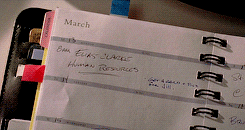It’d been six months since Sarah’s colleague Alexandra became her new boss. She was fine with it at the time, and even relieved that someone who knew her well would now be in charge of the department.
And then . . .things changed.
Sarah couldn’t put her finger on it, but she noticed she was left out of the occasional meeting. She also noticed that conversations that were once easy and natural as coworkers now felt formal and false.
“What do you think’s going on here?” Sarah asked me. “I’m exactly the same person, but something’s changed.”
Yup, it’s time for a relationship reset for Sarah at work.
Ummm. . .what’s a relationship reset at work?
A relationship reset is a plan to hit the pause button on ongoing habits, assumptions, and actions with someone else who’s important to you in your professional life.
It’s a way to make what’s invisible more visible and to create a clear picture of the relationship you want with this person going forward.

That’s great, Darcy, but how do I DO that? Magic beans?
I’ll outline steps to take below, but the reset can be as simple as a short chat, or series of conversations designed to build–or rebuild–the one critical element for any relationship.
Trust.
Trust is the glue for any relationship, with anyone, anywhere.
It’s an essential human need, and yet when we’re diagnosing why our work’s not working, we often forget to dig into where trust is broken, weak, or not present at all.
[Read this later: The Uncomfortable Truths about Trust (& What You Need to Do About it Now)]
How Do I Know It’s Time for a Relationship Reset at Work?
Let’s make this simple.
It’s time for a relationship reset at work when you decide YOU have to WANT a better relationship with that person–that you want to trust them more, and/or you want them to trust YOU.
Yup, it’s up to you.

It’s not on them.
If you’re still not sure, then here are just a few scenarios signaling that it’s time for a better relationship.
- Your boss, leader or influencer doesn’t describe your work or role correctly in meetings
- You’re not getting the opportunities you want, and you’re not sure why
- You don’t fully understand what’s most important to the boss, leader or influencer
- You perceive that the boss, leader or influencer doesn’t understand what’s most important to you
- You’ve received negative feedback, or you’re not getting feedback at all
- You’re going through major changes, professionally or even personally
- Your boss, leader, or influencer is going through major changes, professionally or personally
And of course, you can use a relationship reset at work when someone NEW comes into your world and you don’t even have a relationship yet. These strategies are perfect when you have a new boss or manager, project or people leader, or even a new colleague, vendor or direct report.
Okay, so what do I DO to reset a relationship at work?
Resist the urge to just do a “gotta minute?” door knock and dive into everything that’s not working with you and your now-surprised-and-likely-defensive subject.
Nope.
Smart professionals follow this plan:
Action 1: Create a clear picture of “TO”
So you know that you don’t want what’s happening now. That’s the FROM.
But what do you want it to transition TO?

If you can’t articulate the TO, you won’t be clear in your request for change.
Here are examples:
- Move FROM being considered a writer TO being considered a communication consultant
- Move FROM noticing that others are unsure about my role on the team TO everyone being clear about my role
- Move FROM not knowing which issues to prioritize TO being clear about what’s aligned with leader’s goals
- Move FROM spending time on office politics TO being open and honest about disagreements
- Move FROM unclear email requests TO more frequent voice-to-voice conversations
- Move FROM never saying hello to the team in the morning TO saying hello frequently
Conversations about “different” don’t create change.
Take time to plan in advance what you really want, and why it matters to you.
Action 2: Examine your own biases
There’s no argument that the brain is naturally filled with biases. In fact, over 200 brain biases have been documented by behavioral scientists.
The research is deep and clear.
However, you’ll probably argue until you’re blue that YOU don’t have biases.
Sorry to tell you–you absolutely do.
And congrats, BTW–that makes you human.
Bias is actually the brain’s way to save energy by creating shortcuts to all the information processing and tough thinking that life throws at us.
No one wants to believe that they are biased. That’s actually the trick our biases play on us.

So let’s accept the fact that it’s highly likely one or more of those biases may be coming into play when you think about the relationship with this key person.
Ask yourself these questions:
- What story am I assuming about what’s happening? How do I know it’s true?
- What else could these actions/decisions mean?
- What else might be happening for them that has nothing to do with me?
- If I put myself in the other person’s shoes, how might these issues look from their perspective?
Taking a hard look at your biases in advance of a relationship reset allows you to shift your approach–or to decide whether you still need the reset at all.
Action 3: Frame the ask & schedule the conversation
Okay–you now know what you want (the TO) and what your own biases might be in the situation.
So if you still know you need a relationship reset, it’s time to frame the ask and schedule the conversation.

Here’s what Sarah (from the example at the top of the page) asked Alexandra:
“Hey Alex–I just noticed that it’s now been three months since you took on the leadership role, and I’ve been noticing our work together isn’t as smooth as I’d like it to be. Could we plan a chat in the next couple weeks so I can share some observations with you and get your insights? Our relationship is important to me and I’d like to make sure I’m doing my best to make sure we stay on track. What’s a day that works for you?”
Notice you’re not giving a lot of detail, but just enough to signal that this isn’t an everyday conversation.
Action 4: Have the Conversation

When you’re together (ideally in person, but of course that’s not always possible), here’s what you can say (customize this for your own TOs and FROMs, of course):
I really appreciate your willingness to spend time with me. As I mentioned, I value our ongoing professional relationship, and I wanted to take a step back and share some things I’ve noticed recently.
From my view, I’m noticing a trend that [briefly describe the FROM situation, with examples as relevant].
This concerns me because I believe the better route for all of us would be [briefly describe the TO situation.]
We’re all so busy and I know we can all jump to conclusions from time to time, so I wanted to check in with you and make sure we’re on the same page. I’m curious about anything I’m missing that’s contributing to [the FROM] and getting in the way of [the TO]. I value our relationship and your point of view. So what do you think?
Then, you shut up.

Let the person talk–or not.
Resist the urge to step into any silence.
The silence is where the best, most honest work is getting done in the brain.
So wait’em out.
After they’ve spoken, say:
Thank you–that’s useful. What else?
Don’t defend or explain.
Keep doing that until your time runs out or they say, “Hmm–I think that’s it.”
A few different things may happen:
- Most of the time, you’ll find out something you didn’t know about what the other person sees.
- Like you, they’re also human and attach stories to experiences with you. Once you know these things, the issues that seemed big may get smaller automatically because you can change your thoughts around them.
- Some of the time, you’ll hear something that you don’t want to hear.
- Again, you don’t have to react or defend in that moment. Say thank you and promise to think more deeply on what the person has shared.
- On occasion, the conversation will go nowhere–they won’t understand and you won’t learn anything new.
- So what? At least you had the courage to initiate it, and chances are, you’re a lot clearer now about what you want than you were before attempting a reset.
Action 5: Go First To Trust More
Let’s say you find out something useful–whether it’s positive or negative.
What do you do NOW?
You have to take the lead, no matter what, and trust that when you start to show more trust, others will trust you, too.
Because relationships are built on trust, and trust is always earned over time–not in one magic swoop.

So, you can:
- Take an action based on the conversation, and let them know you did.
- Schedule a follow-up conversation to go deeper if it’s necessary–or even if it’s not.
- Adjust what you’re thinking and saying to yourself and others to better reflect more trust in the other person
And finally, if this relationship is important enough to reset, then trust that you’ll make it happen, one step at a time.
Need more help?
No matter where you’re stuck, I’d like to help. Schedule your initial 30-minute coaching chat with me today–it’s fast, fun and free.
Just hit the button below, and pick a date and time that’s available. Answer a few short questions, and then I’ll call you at the time you picked. There’s nothing to prepare–just show up right where you are. If, after we talk, it sounds like one of my coaching programs or courses will help you going forward, I’ll share details after our call. There’s no pressure –my goal is to be helpful immediately.
Spots for my consultations fill up fast, so schedule yours now, and start getting the support you deserve.
Read this next:
Is it Time to Have a Tough Conversation at Work? Here’s the Script (& How to Get Started)



